The deadliest animals in the world, ranked
Science
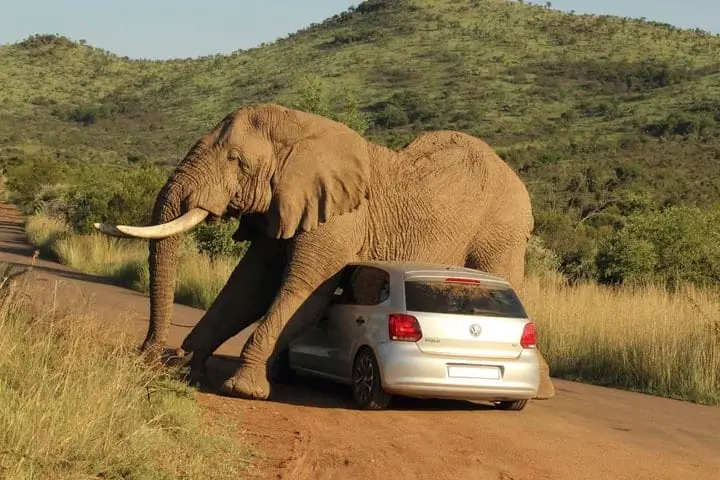
30. Honorable mention: fleas
Earth Touch
Animals kill humans every day, but it’s not always the ones we most suspect. Death can come from the water, a farm, the jungle, or even our vegetables. Many animals are simply more deadly because humans are around them more often, compared to the scary ones we stay away from. And certainly all of these animals cause injuries or disease to many more humans than they actually kill. Starting at number 30 and getting deadlier, we countdown these killer critters.
While they don’t kill many people these days, fleas were once a huge threat. They were responsible for spreading the Bubonic Plague, or Black Death, that killed about 25 million people. The fleas jumped from rats, who carried the plague, to humans and bit the poor people to death.

iStock
A few cases of Bubonic Plague have popped up in recent times, but nowhere near on the scale of the European outbreak in the Middle Ages. Of course, back then, people didn’t know that they should be afraid of these tiny little bugs. But while fleas were once the deadliest animal on earth, things have changed and there are new contenders.
29. Alligators
These huge reptiles certainly are a scary sight, but out of every animal on this list, they’re responsible for the fewest human deaths per year. Alligators only kill about three people each year. In fact, more people die from lightning strikes in the US than from alligators.
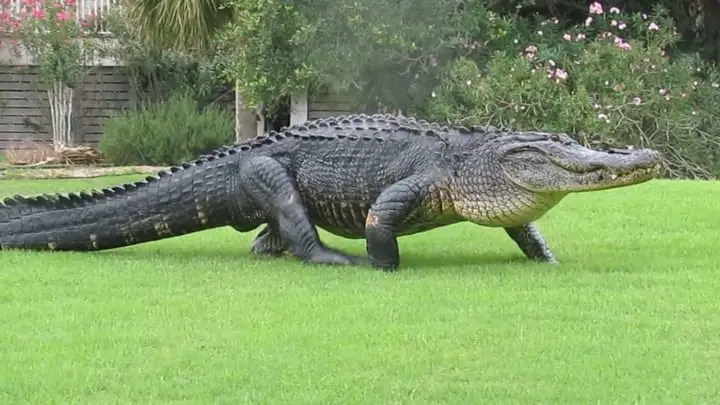
ABC News
Alligators keep growing throughout their life. Most males are around eight to ten feet long, but they can get up to 15 feet long in old age. Amazingly, they’ve been seen using sticks to lure in birds who are looking for nest building materials. And while alligators are mostly known for eating fish, mammals, and other animals, sometimes they eat fruit, too.
28. Wolves
Wolves have had a terrible reputation for a long time. They nearly went extinct in the US, because they were hunted and killed just for the purpose of getting rid of them. While they can be harmful to livestock, they don’t kill very many people per year. Only a couple deaths a year are from wolf attacks, some of which are from rabid wolves.
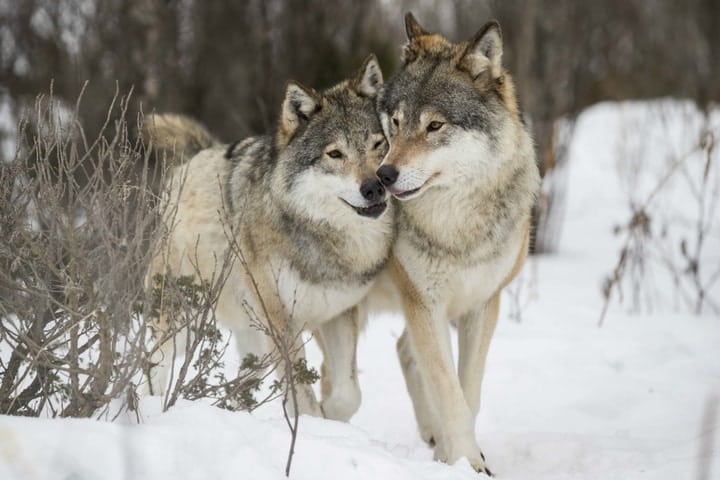
The Local Denmark
In contrast, several hundred wolves are killed by humans each year in the US. Sometimes they’re killed because they ate someone’s livestock, but this can actually increase the amount of livestock eaten next year. Wolves are very social animals, so killing them disrupts their pack structure and can lead to more wolves eating livestock than their normal prey.
27. Sharks
While there have been numerous movies depicting deadly shark attacks (think Jaws, Sharknado, and The Meg), shark attacks are pretty rare and deaths from them are even rarer. About six to ten people per year die from shark attacks, while around 150 are attacked each year. Less than a hundred of those are unprovoked, though.
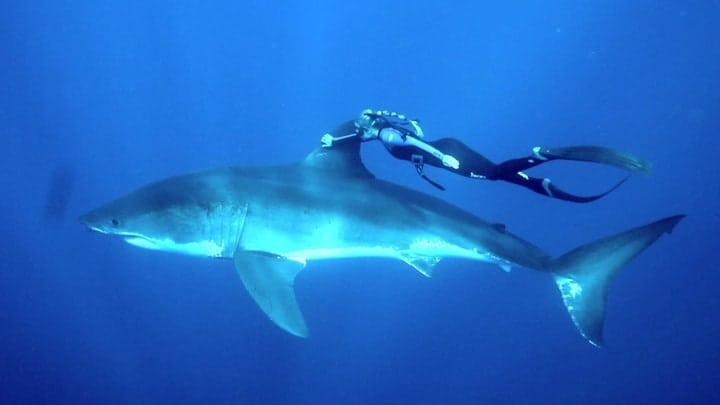
Caribbean Soul
Every hour, people kill 11,417 sharks. In a year, that adds up to 100 million dead sharks. Many of them are being killed for their fins, which are used to make shark fin soup. A lot are killed as by-catch, meaning that people were fishing for something else but accidentally killed a shark instead. Humans do a lot more damage to sharks than they do to us.
27.5 The deadliest sharks
While sharks don’t kill many people per year, the ones that do are limited to only a few different species. Everyone knows great white sharks (aka white sharks if you ask a biologist) can be deadly. They have probably attacked the most humans out of any shark.
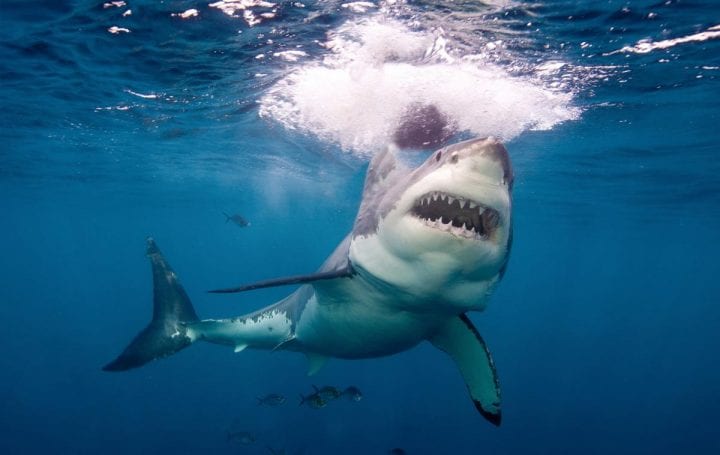
Oceana
The runners up are the tiger shark and bull shark. Both of these species are willing to eat just about anything, so they take their chances sometimes with humans. Every other species has only attacked humans 30 times or less, on record. Out of the 400 or so species, most have never hurt a human in their millions of years on Earth.
26. Bears
Despite our teddification of bears, in which we turned them into a display of love between high schoolers at a carnival or family members at a hospital, they are still frightening wild animals. Every year, about 12 people die from being mauled by a bear. This includes bears around the world, from the brown bears of North America to the sloth bears of India.
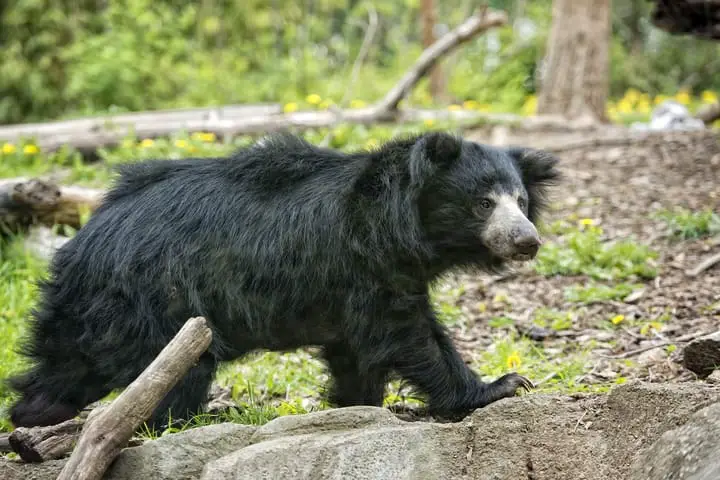
Bear Trust International
Sloth bears, despite eating mostly insects and fruits, are possibly the most aggressive bear. It’s probably because they have to fend off tigers, who sometimes try to eat them. Bears most often kill people when bears and humans accidentally encounter each other, which is especially dangerous if the bear has cubs.
25. Spiders
While spiders are probably one of the scariest animals on earth, they aren’t even close to the deadliest. It’s true that there’s potentially lethal spiders (the worst of which live in Australia) but they don’t actually kill a lot of people. In the US, about seven people die each year from the bites of either black widows or brown recluses.
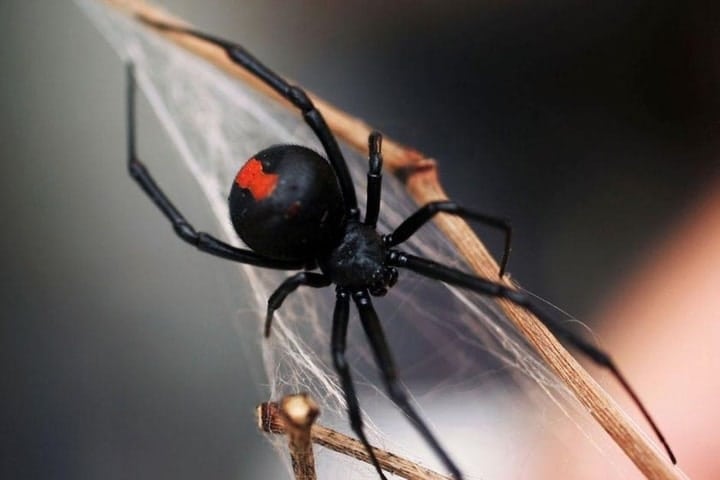
ABC
Since antivenom was invented for the funnel-web and redback spiders, Australians really aren’t dying from their bites either. In 2016, the first Australian in 37 years died of a spider bite. Actually, many of the bites from these venomous pests aren’t severe enough to kill a person. However, plenty of people still are hospitalized because of them.
25.5 The most venomous spider
Brazilian wandering spiders are often called the most venomous and deadliest spider on Earth. There are eight different species, all belonging to the genus Phoneutria, which means “murderess” in Greek. All eight live in Brazil, but some live throughout Latin America. They’re often confused with a completely harmless spider that looks similar.
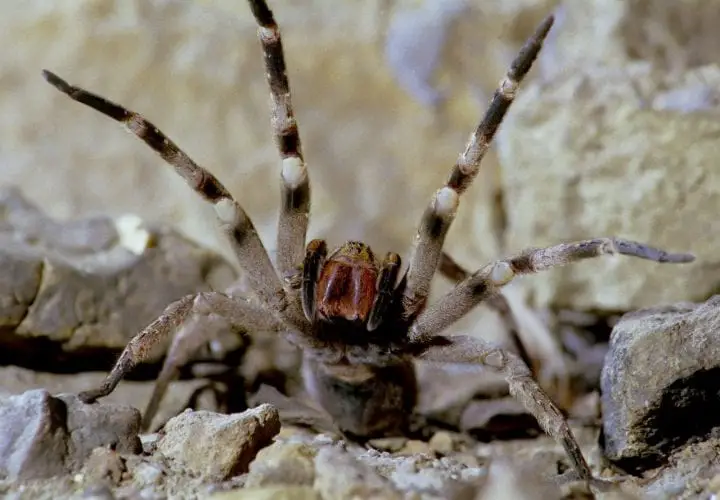
Steve Downer
Rather than building webs to catch food, Brazilian wandering spiders walk about the forest floor, hunting and ambushing small animals like reptiles, spiders, and mice. Their bite gives people severe burning pain, nausea, hypothermia, and other symptoms. It can be lethal, but victims usually take antivenin and the spiders rarely inject all of their venom in one bite.
24. Ants
Generally, the average American only encounters ants that are simply a nuisance, but some people say ants kill around 30 people each year. Of course, these deaths are worldwide, where there are all kinds of ants. There are actually more than 10,000 ant species, many of which live in tropical forests.
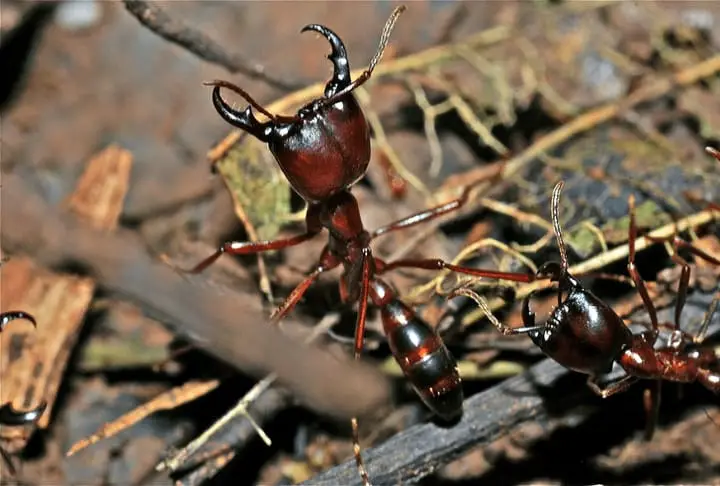
Our Breathing Planet
Fire ants are well known for being aggressive and they have killed people by stinging them, because it can cause an allergic reaction. About 9 people in the US die each year from ants. However, elsewhere ants can kill with venomous stings (if you got stung like a few hundred times). Driver ants, like the ones from Indiana Jones 4, could potentially eat a person if they weren’t moving.
24.5 The deadliest ant
The bulldog ant is considered the most dangerous ant in the world, because it’s very aggressive and stings its victims with venom. When attacking, a bulldog ant clamps on its victim with its mandibles and then curls its body and injects its stinger into the animal. These ants bite several times, injecting venom each time.
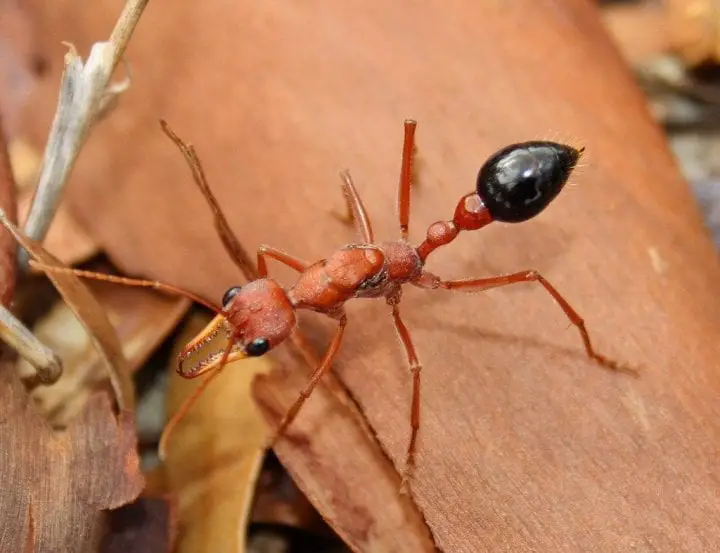
PestWiki
As with many of the world’s most venomous animals, bulldog ants live in Australia. They aren’t afraid of humans, though, despite the enormous size difference. However, only three human fatalities have been recorded since 1936, but a person can die within 15 minutes of the sting.
23. Cows
Cows are certainly not viewed as particularly scary, but when they’re falling from the sky, you’d probably reconsider. Jumping off a cliff is only one of the several ways cows have killed people. For example, sometimes dogs agitate cows and once the owner gets involved, it doesn’t end well. Other times, cows are purposefully aggressive and attack people.
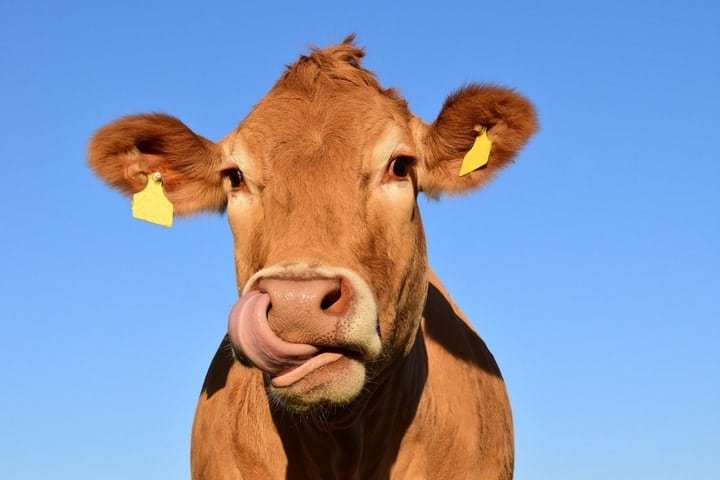
Phys.org
Cows have even been seen ganging up on unlucky people. It may have something to do with the fact that humans kill millions of them per year. Of course, there are cases where it’s just accidental; maybe the cow was in an enclosed space and got spooked, crushing the poor person. About 20 Americans die each year from cows, but worldwide it’s more.
22. Horses
While horse girls may be crazy for horses, they probably aren’t thinking about the dangers they pose to people. Horses kill about 20 people a year in the US, several a year in Australia, and probably more worldwide. Surprisingly, horses kill more people in Australia than the country’s superbly venomous snakes and spiders.
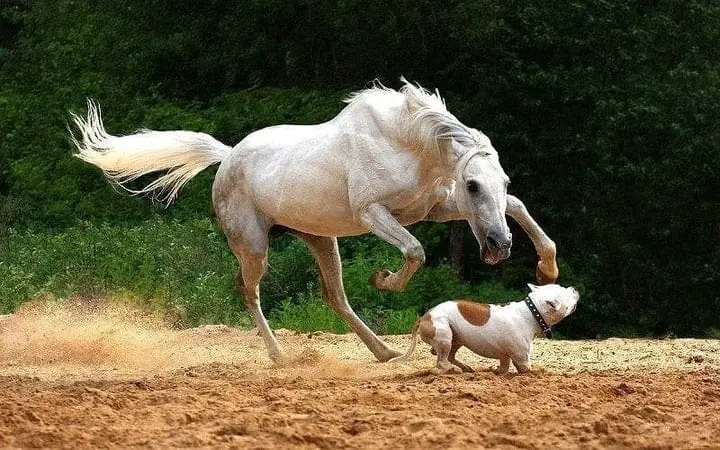
Ekaterina Druz
Many of these deaths are from people falling off the horses, so try not to fall off when riding them (it’s just that easy!). Occasionally, horses do attack people, but it’s pretty uncommon. There’s also hundreds of race horses dying at the tracks each year because they’ve been pushed too far, so maybe throwing a rider off is just a little payback.
21. Lions
Dorothy was right to be afraid of lions, because many are not cowardly at all. Lions kill around 70 to 100 people each year, some of whom they eat. Whenever a big cat gets a taste for human flesh and actively hunts people, they’re called a man-eater. This isn’t normal behavior, but there are a few possible explanations.
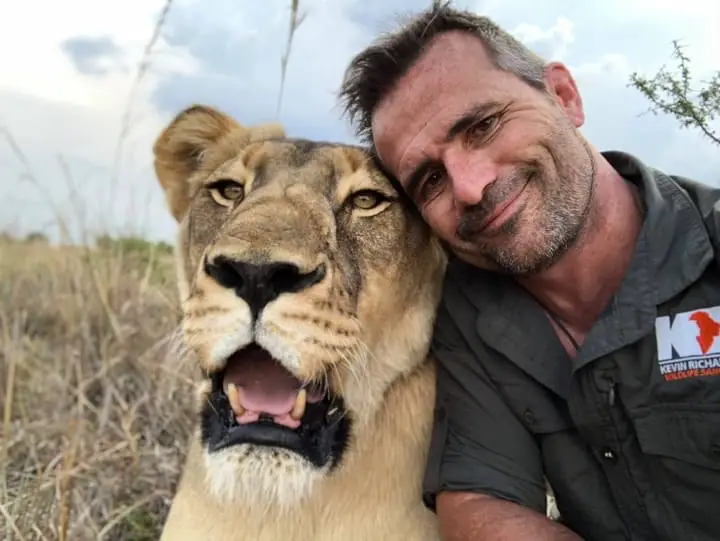
Medium
For example, in 1898 there were a pair of lions that killed between 35 and 135 railroad workers in Kenya. The two were shot and killed, but when scientists inspected their skulls decades later, they found a compelling reason for why the lions turned man-eater. Their teeth and jaws were damaged, likely keeping them from hunting their normal prey.
21.5 The deadliest cat
The deadliest cat on Earth is actually the tiny, but wild black-footed cat, who are smaller than many pet cats. Sure they may not be killing any humans, but they kill the most prey out of any cat. Each night these kitties kill about 10 to 14 rodents and birds, as a result of their 60 percent success rate.
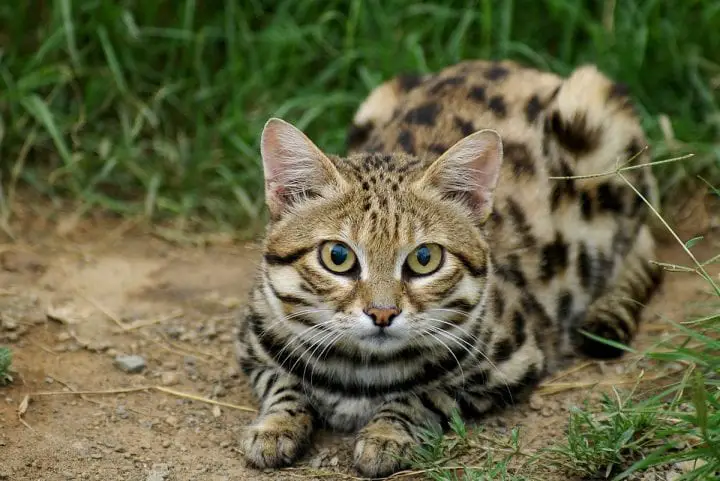
Cat Conservation Trust
The fearsome and scary lions are only successful about 25 percent of the time. Black-footed cats have to eat so much every night because they are so small. It gives them a very fast metabolism and a very large appetite. These little killers live in the grasslands of Africa, where they’re the smallest cat around.
20. Tigers
Outside of the west, where they’re a popular favorite among animal lovers, tigers are viewed quite fearfully. In India, people often live not too far from them and as the largest big cats, they’re pretty scary next door neighbors. But since their habitat has been reduced so much, there’s a lot more tigers in a smaller space, which causes problems. Around a hundred people each year die from tiger attacks, but it can be highly variable.
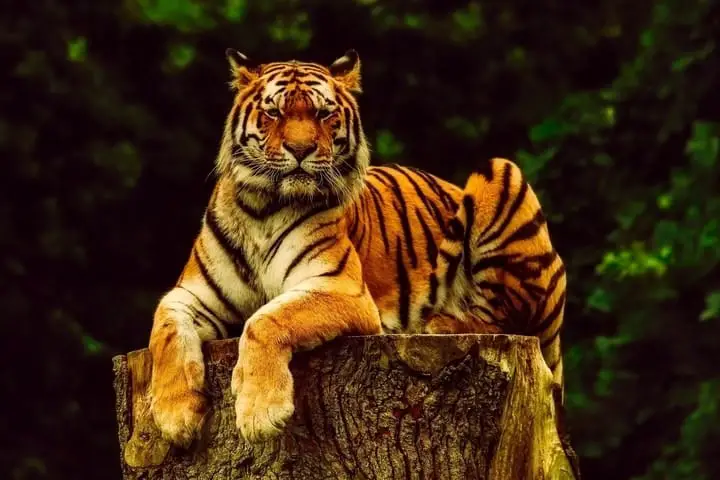
Animal Planet
There have been many notorious tiger man-eaters. Many of them likely turned to eating humans because of injuries, like the pair of lions, or because they can’t control their own territory (which they need to get food). However, tigers mostly kill humans out of just accidental run-ins, perhaps because they’re being territorial.
19. Box jellyfish
It’s estimated that around a hundred people die each year from box jellyfish stings, which each have enough venom to kill about 60 people. These 24-eyed marine creatures inject toxins into people’s blood, causing their heart to stop. Although some people die a different way; they go into shock and drown because the pain is so intense.
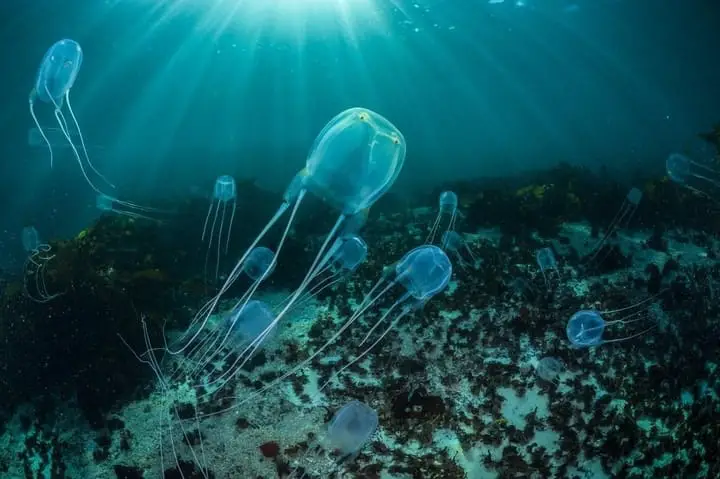
Thomas P. Peschak/National Geographic
However, some people stung by them don’t actually die, if they get to shore and treatment in time. The most deadly species of box jellyfish live around Australia, but some live near Hawaii and Florida. They’re 10 feet tall, because their 15 tentacles are so long. Nemo’s dad was very lucky that the jellyfish he encountered were not the deadly box jellyfish.
18. Bees, wasps, and hornets
Every year perhaps a hundred or more people die from bee, wasp, or hornet stings. While some of the deaths have been caused by a whole lot of stings on one person, most were actually due to allergic reactions. About 58 people in the US die from these insects per year, which make them one of the more surprisingly deadly animals in the United States.
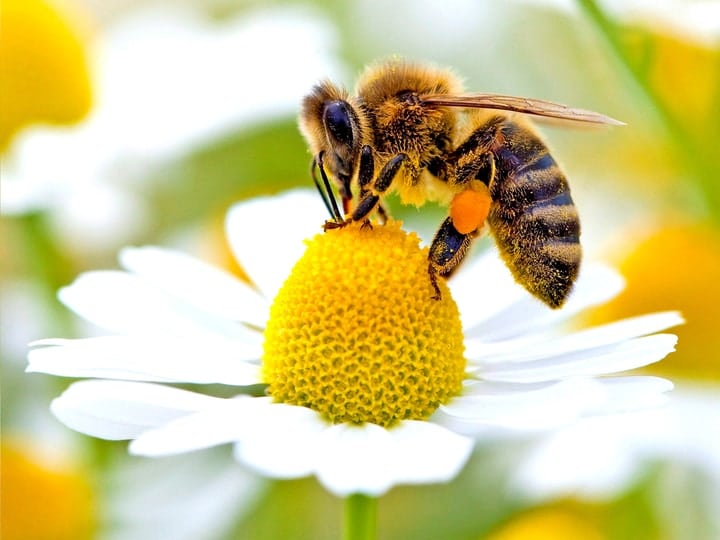
Hollowells
So instead of worrying about sharks while you’re swimming, worry about whether or not you have your EpiPen on you while going about your day. Bees just aren’t as sweet as the honey they make. But their dwindling numbers are cause for concern, because they pollinate quite a lot of our food.
18.5 The most venomous hornet
Perhaps the deadliest of all bees, wasps, and hornets is the Asian giant hornet. It’s the largest hornet in the world and is five times larger than the average honey bee. They have deadly venom and can kill about 40 honeybees a minute. While we know that honeybees are a killer, these guys pack an even more potent punch.
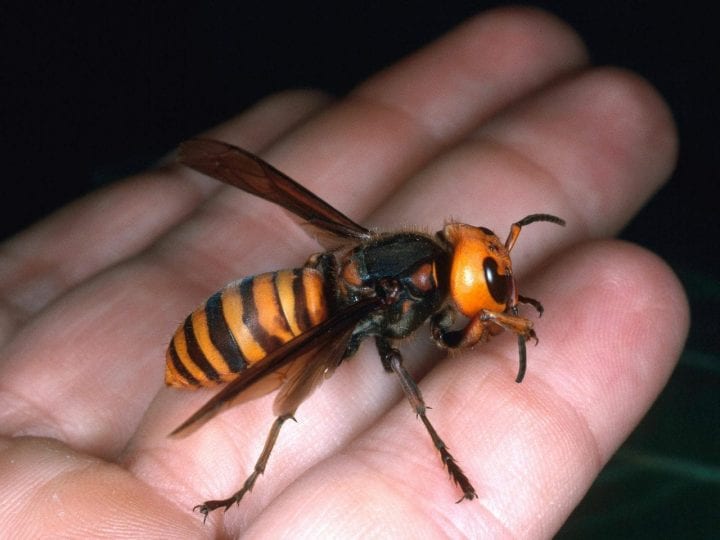
Vermont Public Radio
Asian giant hornet venom destroys people’s red blood cells, sometimes leading to kidney failure and death. Many people die from allergies to the venom, though, and about 40 people in Japan die each year from these hornet stings. People have said their sting is insanely painful and feels like a hot nail driving into their skin.
17. Cape buffalo
Cape buffalo, also known as “The Black Death” and “widowmaker,” are notoriously dangerous among hunters in Africa. When wounded, they’ll run off and then sometimes circle back to attack the hunter who shot them. It’s almost like they were upset about getting shot, but that’s just a wild guess.
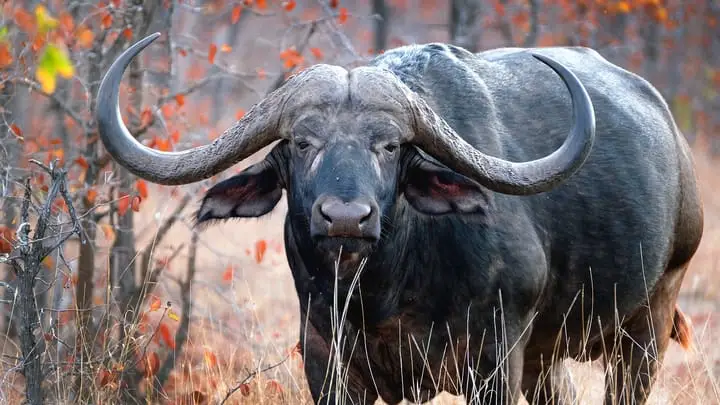
Senalala Luxury Safari Camp
There are some estimates that say Cape buffalo kill about 200 people a year. And despite the fact that they’re herbivores, their killing isn’t limited to humans. When lions attack them, Cape buffalo will sometimes fight back and kill the lion instead. It’s pretty brutal, because in the process the buffalo will fling a lion up in the air.
16. Leopards
There isn’t a lot of data about how many people leopards kill, but some have suggested that it’s in the hundreds each year. Just like tigers and lions, they can be man-eaters. There are several examples of it in history; certain leopards killed more than a hundred people just by themselves.
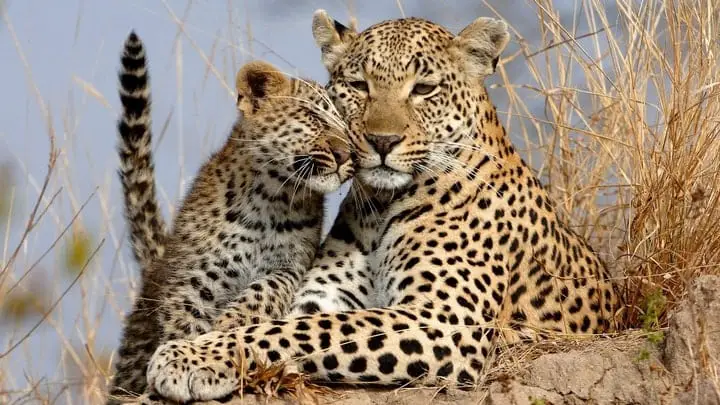
andBeyond
When it comes to big cats, the human deaths per year are highly variable, since some man-eaters have killed a lot more than others. Plus, there might not even be a man-eater for some time, in which case deaths are just from accidental meetings. Like tigers, leopards are mostly killing people in India.
15. Deer
Deer are not known for being aggressive, but they do kill around 240 people per year (and probably more than that). Most of these deaths are from car accidents, since deer have a funny little habit of suddenly jumping out onto the road, despite a car speeding down it.
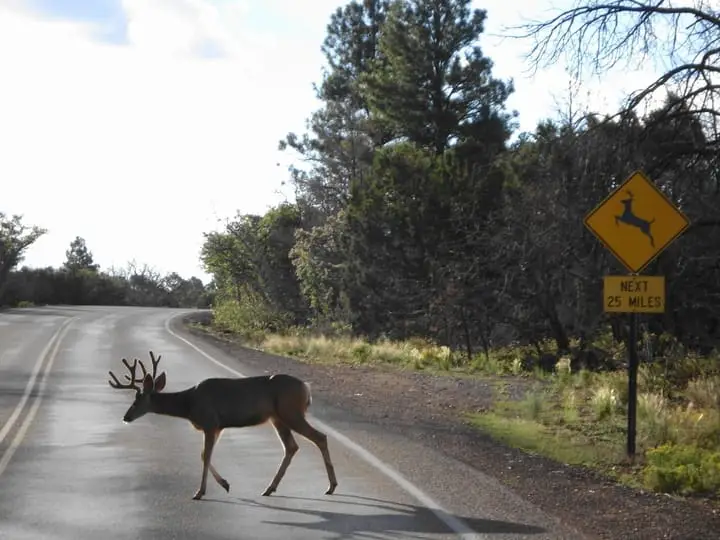
Mapio.net
Of course, we’ve confused them by putting death lanes smack in the middle of their territory. They haven’t exactly had a lot of time to evolve and adapt to the changing environment. Hopefully, deer will learn how to cross the street and stop causing so many accidents, because they’re victims of them too.
14. Kudu
Similar to how deer kill people, drivers in Africa sometimes die from colliding with the greater kudu antelope. While exact numbers are hard to find for how many people kudu kill, the Food and Agriculture Organization of the United Nations reported that, at least in Namibia, it’s more than crocodiles kill.
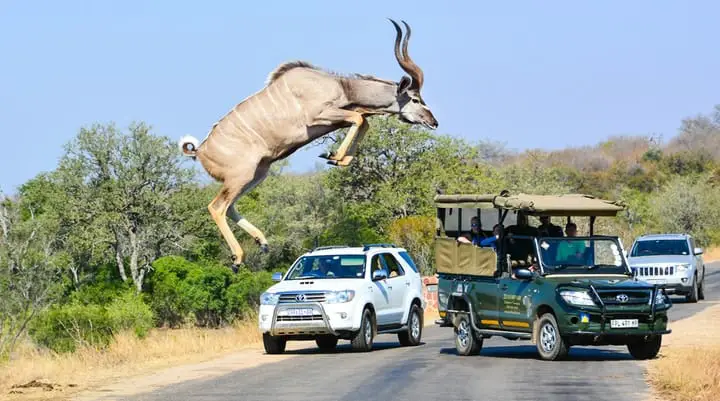
Barcroft Media
Of course, the kudu usually die in this encounter, too. So they don’t get anything out of this meeting. Part of the problem is that kudu actually thrive in human populated areas, because they like abandoned fields and pastures. And also like deer, kudu are hunted for their meat.
13. Elephants
If Dumbo hadn’t been a Disney film, we probably would have seen Dumbo’s mom, Mrs. Jumbo, kill the people teasing her baby. Elephants kill about 500 people per year, but the attacks are actually becoming more common. Their habitat is shrinking and so they’re forced to be around humans more often.

Earth Touch
Some researchers think elephants are killing people because they have a form of PTSD and remember that humans killed their family. The aggression is being passed between family members, so people are turning to unconventional methods to keep wild elephants away. They’ve used chili powder and domestic elephants to deter the large animals from coming too close.
12. Hippopotamuses
Hippos are territorial and huge (they can get up to 6,000 pounds!) so naturally, they pose a threat to humans. About 500 deaths per year are caused by these “river horses” (as their name translates in Greek). The attacks are sometimes because humans appear to pose a threat to hippo calves, and this makes the hippo moms get very angry.
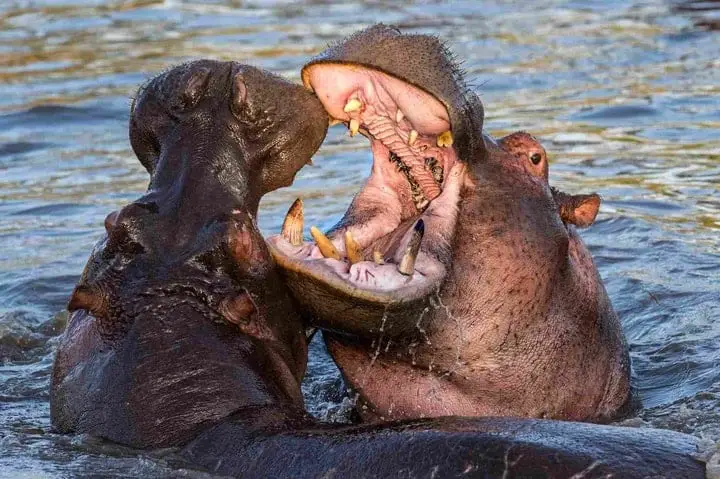
TripSavvy
They’ve trampled people, pulled them into lakes, tipped over boats, and even bitten heads off. Unfortunately, since they’ve lost a lot of habitat, they’re forced to live closer to humans. But humans have killed plenty of them, too, and George Washington even had a set of false teeth made out of their chompers (not wood, as the myth goes).
11. Tapeworms
They’re nasty and creepy, and nobody likes them, but tapeworms continue to infect and kill approximately 700 unfortunate people each year. Their murder weapon is the disease cysticercosis, which they spread through human excrement (you’ll see this is a common theme in some of the deadliest animals). Their danger combines with their alien-like grotesqueness in quite the unpleasant way.
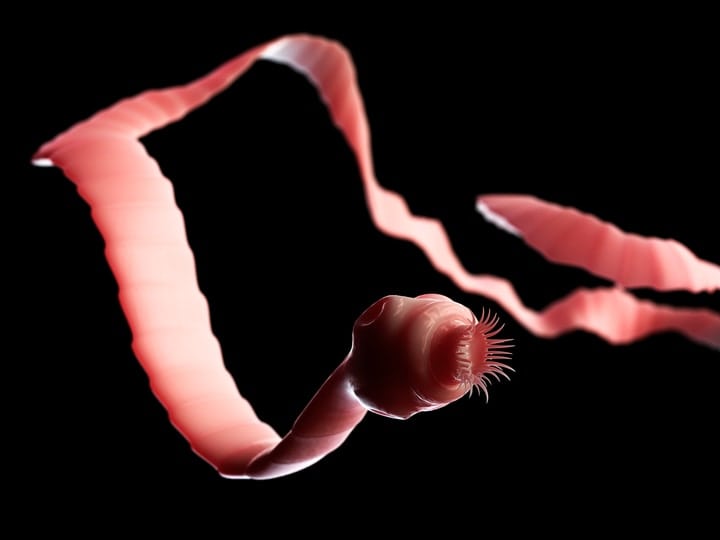
People
These deaths occur worldwide, but mostly in the rural areas of developing countries, because it’s linked to poor hygiene. People get the disease from swallowing eggs that came from contaminated food or fingers. If that wasn’t gross enough, you should know that it’s prevalent wherever pigs eat human feces.
10. Crocodiles
It’s hard to find exact numbers, but it’s estimated that crocodiles kill about 1,000 people per year. However, it’s likely that many attacks aren’t reported. Crocodiles are quite deadly because they can easily live near humans without being noticed and then snap someone up very quickly. Most of these attacks are in Africa, so crocodiles have earned the title of most deadly African large animal.
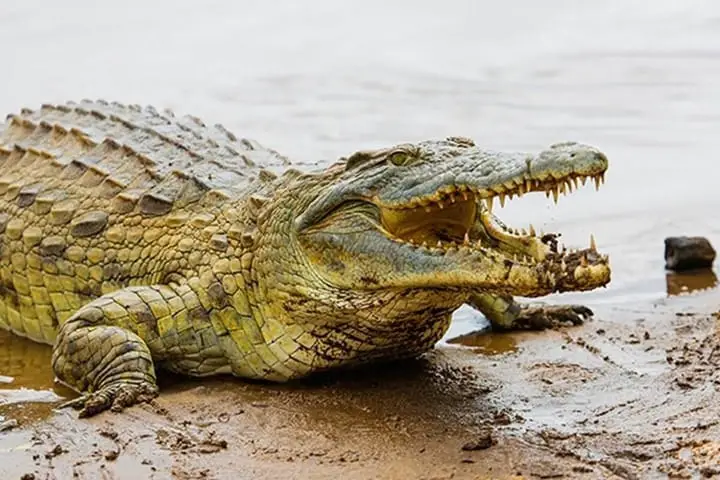
Kids Biology
Hippos and cape buffaloes have been contenders for that same title, but they’ve been beat out. Some people in Africa don’t believe real crocodiles are doing the attacks. Instead, they believe that the crocodile culprits are made by witches or perhaps controlled by spirits. Either way, there’s a lot of crocodiles and they live over a large range, giving them ample opportunities to kill.
9. Scorpions
While there are around 2,000 different scorpion species, only about 25 species of scorpion have venom that is potentially lethal to humans. Every year, these species kill about 3,250 people. However, most of these deaths are caused by one species: the Brazilian yellow scorpion. It lives in South America and stings thousands of people a year.
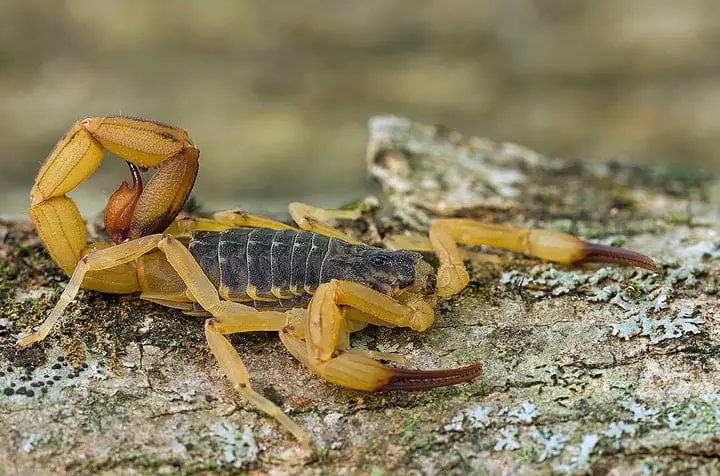
Planet Deadly
Unfortunately, the antivenom for the Brazilian yellow scorpion isn’t totally effective and can sometimes cause lethal allergic reactions. So imagine trying to be cured, and then dying from the medicine. Just try to stay away from these horrible creatures as much as possible. Other super venomous scorpions live in the Middle East, Africa, Asia, and the southwestern US.
9.5 The most venomous scorpion
The deathstalker scorpion is often named the most venomous scorpion and has the name to show for it. They live in the Middle East, hunting at night for worms and centipedes. Once they find their prey, the scorpions sting and paralyze them. It doesn’t inject all its venom at once.
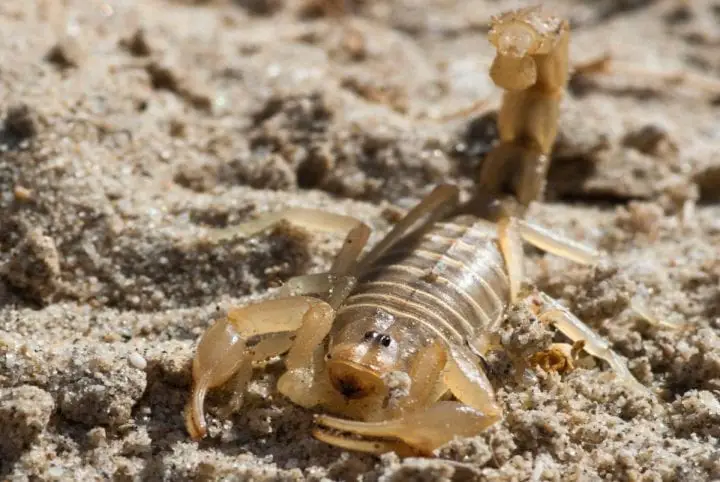
AnimalSake
Research shows that 0.25mg (aka less than a hundredth of an ounce) of their venom could kill over 2 pounds worth of mice. Venom potency is hard to measure, though, because we can’t exactly test the venom on humans. Plus, different animals have evolved venom for different uses, so it is hard to compare them.
8. Ascaris roundworms
These gross little worms are responsible for around 4,500 deaths per year. They cause the disease ascariasis worldwide, but mostly in developing countries with warm and humid climates. Luckily, ascariasis is uncommon in the US. It’s largely a product of bad hygiene because of how the worms spread.
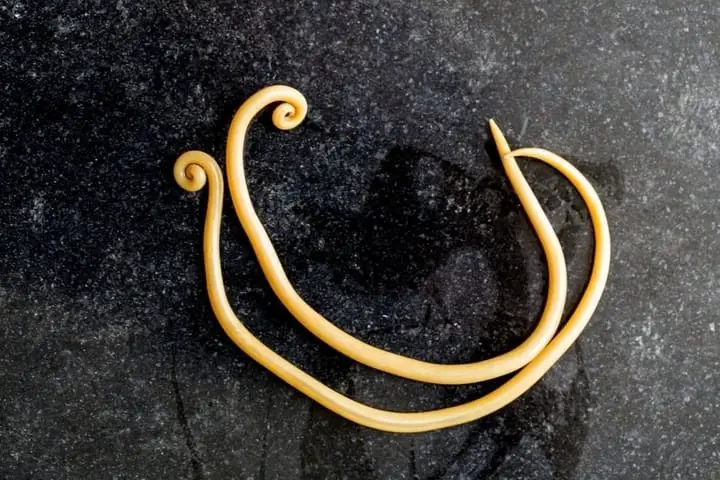
Medical News Today
The worms live in the small intestine of unsuspecting people and spread their eggs through human excrement. If this excrement contaminates water or dirt, or gets on food because it’s used as fertilizer, it just spreads the worms further. There are treatments for the disease, but people can even get it from pigs.
7. Tsetse flies
The tsetse fly lives in rural Africa, where it spreads sleeping sickness. There are less than 5,000 cases reported each year, but the death count is rather uncertain. Plus, it’s likely that more people get the disease than we know. Sleeping sickness can be cured, but some people just don’t have access to the cure.
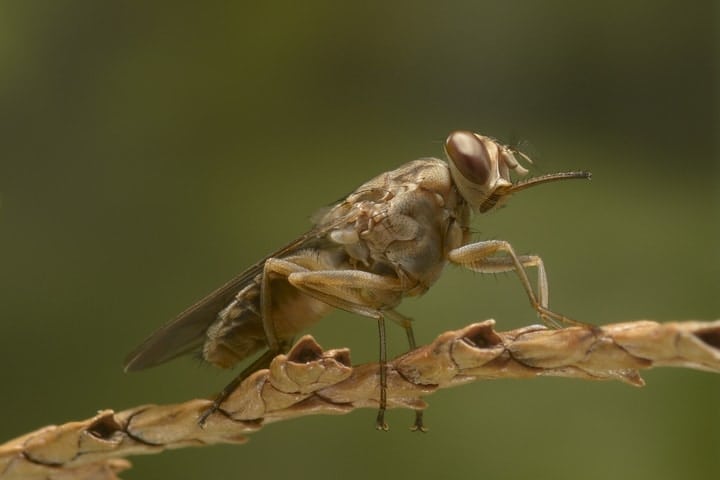
AgriBusiness Zambia
The good news, though, is that there are fewer and fewer cases each year. In 1998, 40,000 people reported they had the disease, so in just a decade it’s prevalence has gone down drastically. But just in case, get your swatters ready for if you see this little fly.
6. Kissing bugs
Also known as the “assassin bug,” the kissing bug causes about 12,000 human deaths per year. It spreads the Chagas disease in Latin America through its excrement, which it puts on people’s skin. As we learned from some of the other deadly animals, excrement should just generally be avoided if one plans to prosper in this world of creepy crawlies.
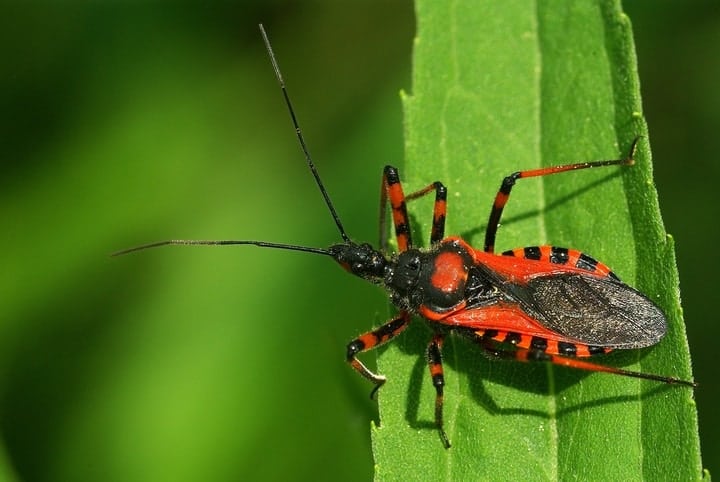
WTKR.com
But kissing bugs make it difficult to avoid their excrement, because they regularly bite sleeping people right on the face. In fact, this is how they got their charming and misleading name. So while Dementors are purely from J.K. Rowling’s imagination, this kiss of death is very much real.
5. Dogs
About 25,000 to 35,000 people per year are killed by man’s supposed best friend, dogs. Most of these deaths are actually due to rabies, though, so you can’t entirely blame the pups. But despite what you might have heard from Michael Scott, rabies is a fully preventable disease. They can be our most loyal companions, but that companionship means more humans are exposed to more of the dangerous canines, as well.
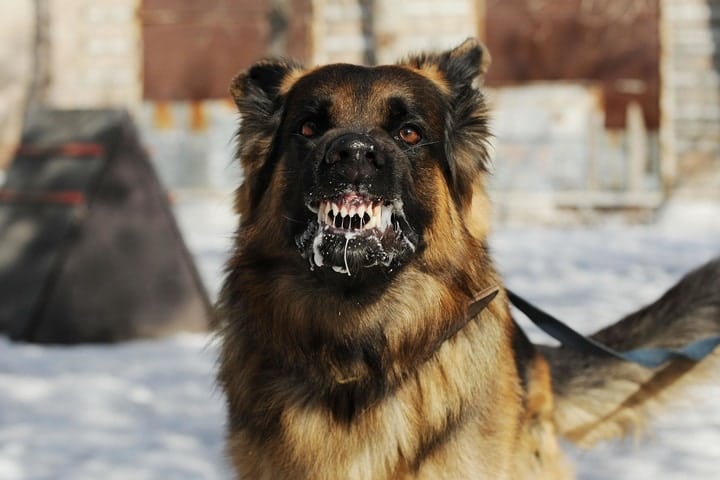
Wilmington Star News
Dogs can be vaccinated against rabies, but in Africa, Asia, and Latin America there are a lot of stray dogs that haven’t yet been to the vet. Regardless where you live, you should probably vaccinate your dog. It’s a win-win situation, because it protects both you and the pooch.
4. Blood flukes (via freshwater snails)
You know the animal is bad if it’s got “blood” in the name. Blood flukes are a type of parasitic worm, called schistosomes, that cause the disease schistosomiasis. They live and grow in freshwater snails, but then move to humans when people come in contact with contaminated water. They actually get into humans through the skin, instead of open parts like the mouth.
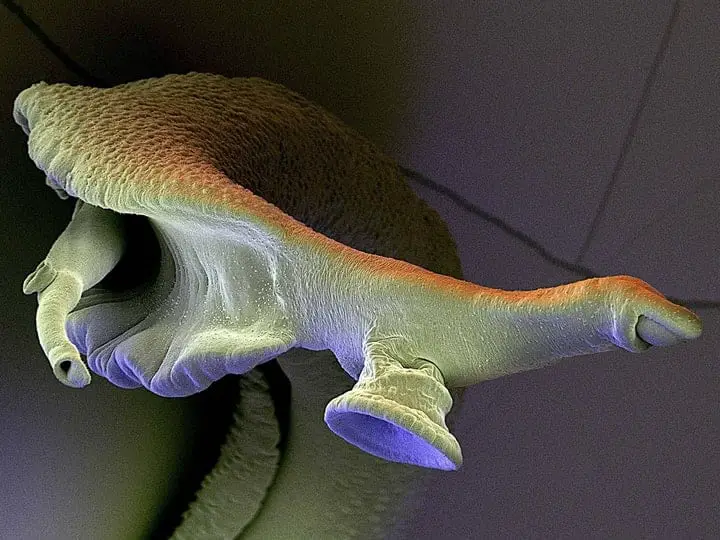
Pinterest
In humans, they live in the liver, veins, and urinary tract. The worms lay eggs inside people, which are then spread through human excrement. This disease is mostly in Africa, but also in other poor communities in places like South America and the Middle East. There are treatments for it, but not everyone has access to them.
4.5 The most venomous snail
While freshwater snails kill people with their unwanted passengers the blood flukes, other snails are seriously venomous. Marine cone snails launch one of their venom-filled teeth at fish to slow them down. It paralyzes the fish, so the cone snail can catch up and eat it.

YouTube
A cone snail’s tooth is sharp enough to go through a wetsuit, so they can be problematic for divers. The sting can be fatal to humans if they don’t seek medical attention, but only 36 deaths have been recorded since 1670. Next time you see a snail, though, just remember that just because it’s slow doesn’t mean it’s harmless.
3. Snakes
Snakes have certainly earned the frightful reputation that surrounds them. Many people say they kill 50,000 people per year, but it might be as high as 200,000. Their venomous bites are nothing to trifle with and Taipan snakes are probably the worst. The Inland Taipan could kill more than 100 people with one bite, if it could just get its jaws around that many people at once.
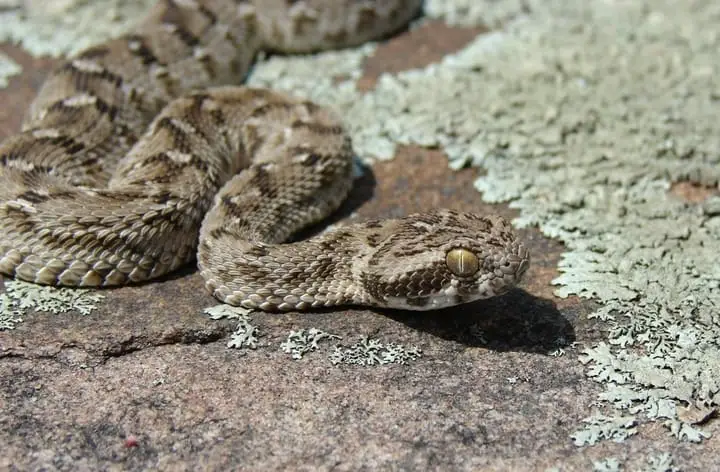
AnimalSake
While Taipan live in Australia, snakes are a much bigger problem in India. They’re also a menace in Africa, Latin America, Pakistan, Afghanistan, and East Asia. In Australia, only a few people die each year from snake bites, though many more are hospitalized. Still, watch out for the cobras, vipers, and kraits, because they are not your friendly neighborhood garter snakes.
3.5 Most venomous snake
The inland taipan often ranks as the most venomous snake. It doesn’t have the largest quantity of venom, but its venom is very potent against mammals. These snakes live in Australian deserts where humans are unlikely to come across them. But when it does feel threatened, the inland taipan bites several times in a row.
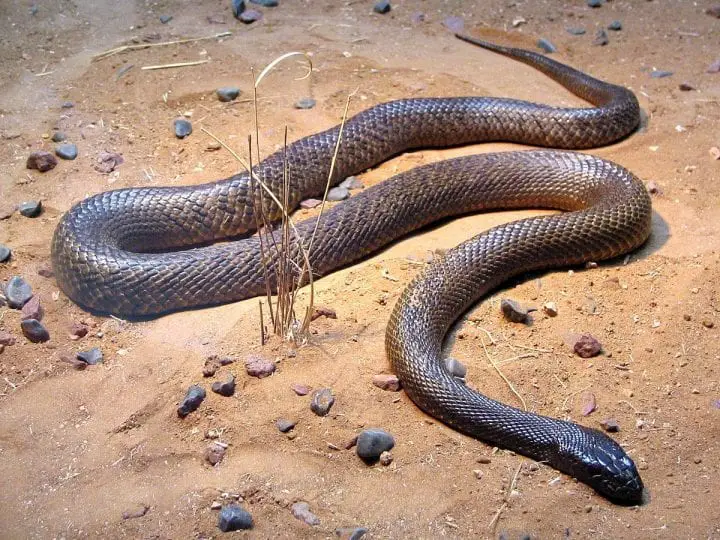
Wikipedia
Inland taipan venom has neurotoxins, which cause victims to have slurred speech, seizures, and inability to control their limbs. The venom also contains hemotoxins, which lead to internal bleeding. Most of the time, though, people who get bitten by inland taipans are handling the snake. They aren’t just surprised by a snake sneak attack.
2. Mosquitoes
While probably the smallest animal on this list, mosquitoes are truly frightening. Every year they kill about 725,000 people, by transmitting diseases like malaria, dengue fever, yellow fever, and encephalitis. There are more than 3,000 species of mosquitoes, which is more mosquitoes than should exist in the first place.
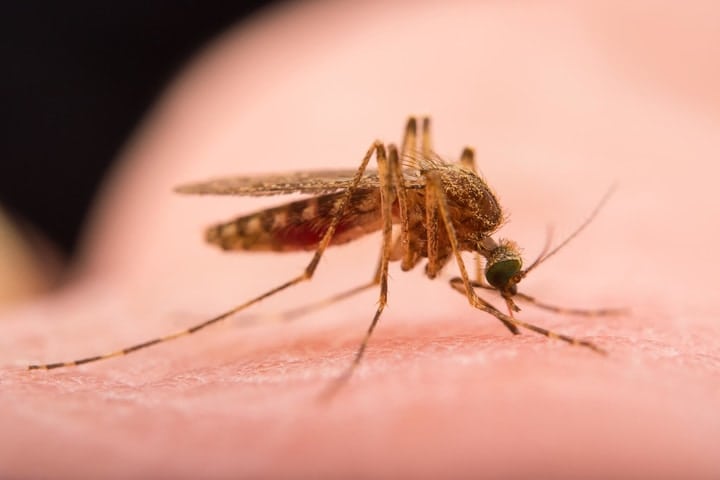
Genetic Literacy Project
Mostly, they’re killing people in Sub-Saharan Africa, Asia, and Latin America. But on top of the hundreds of thousands that die, millions more are suffering through these diseases. Mosquitoes really are out to get us. Some scientists are thinking about using gene editing to just get rid of them all, by introducing a mutation that makes females sterile.
1. Humans
As seen on TV, humans murder each other quite a bit. While Western crime shows are certainly exaggerating, researchers have found that humans murder about 437,000 other humans each year. But if you add war deaths to this, the total goes up: around 135,000 deaths in 2017 were from war. Of course, this number changes a lot year to year, depending on who’s decided to battle it out.

TV Fanatic
However, murder and war aren’t the only ways people kill each other. Over a million people die from road traffic each year. China and India have the most traffic-related deaths, at over 200,000 each. In the US, it’s around 35,000 deaths per year. We really are our own worst enemy.
But the most deadly animals are not necessarily the most potent…